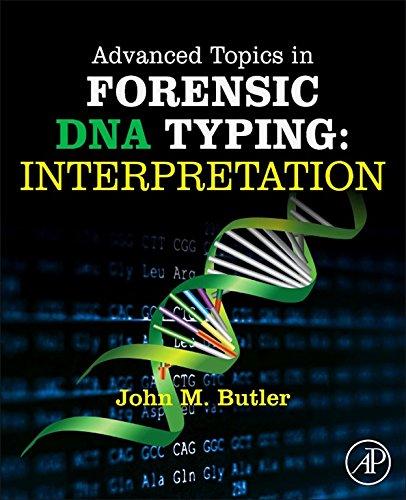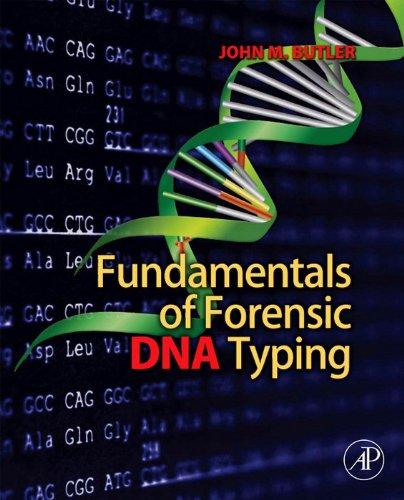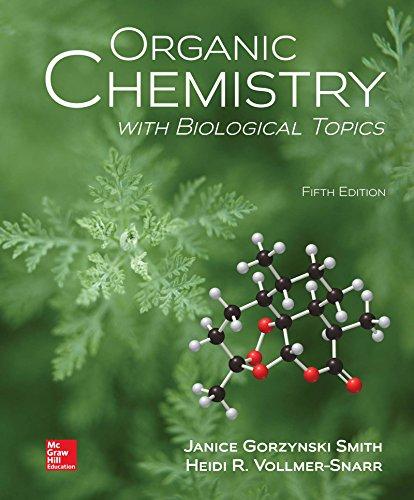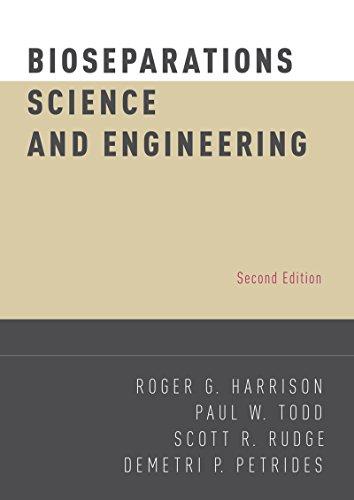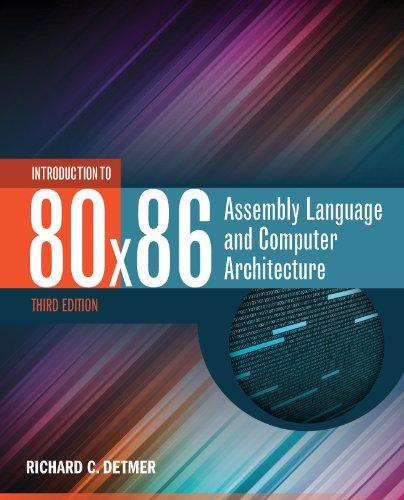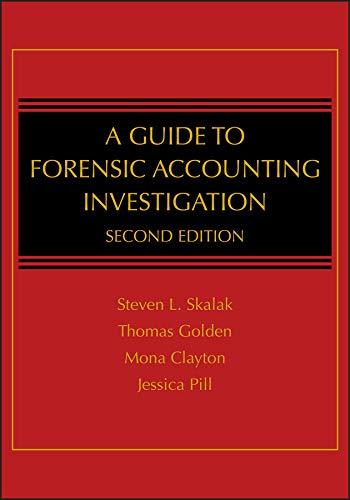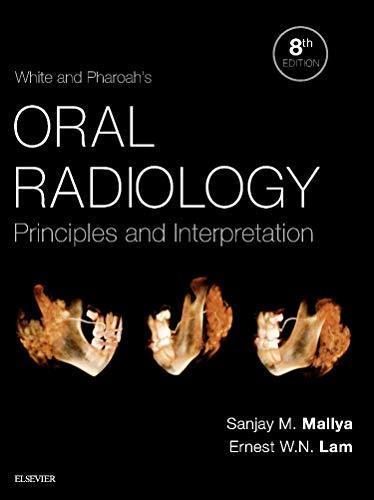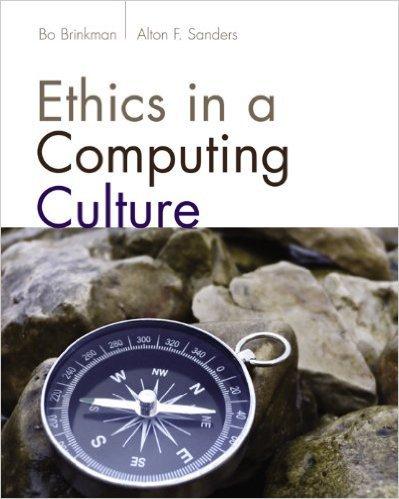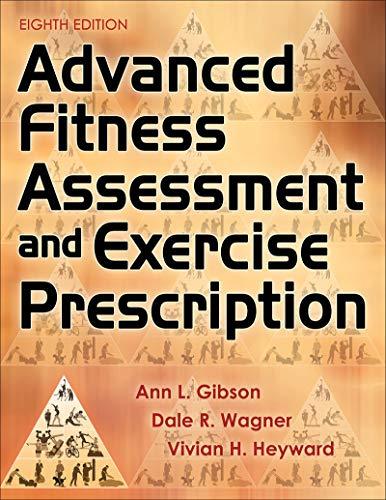Typing: Interpretation 1st Edition –Ebook PDF Version Visit to download the full and correct content document: https://ebookmass.com/product/advanced-topics-in-forensic-dna-typing-interpretation1st-edition-ebook-pdf-version/
More products digital (pdf, epub, mobi) instant download maybe you interests ...
Fundamentals of Forensic DNA Typing 1st Edition – Ebook PDF Version
https://ebookmass.com/product/fundamentals-of-forensic-dnatyping-1st-edition-ebook-pdf-version/
Organic Chemistry with Biological Topics – Ebook PDF Version
https://ebookmass.com/product/organic-chemistry-with-biologicaltopics-ebook-pdf-version/
Bioseparations Science and Engineering (Topics in Chemical Engineering) 2nd Edition – Ebook PDF Version
https://ebookmass.com/product/bioseparations-science-andengineering-topics-in-chemical-engineering-2nd-edition-ebook-pdfversion/
Introduction to 80×86 Assembly Language and Computer Architecture – Ebook PDF Version
https://ebookmass.com/product/introduction-to-8086-assemblylanguage-and-computer-architecture-ebook-pdf-version/
A Guide to Forensic Accounting Investigation – Ebook PDF Version
https://ebookmass.com/product/a-guide-to-forensic-accountinginvestigation-ebook-pdf-version/
White and Pharoah’s Oral Radiology: Principles Interpretation 8th Edition – Ebook PDF Version
https://ebookmass.com/product/white-and-pharoahs-oral-radiologyprinciples-interpretation-8th-edition-ebook-pdf-version/
eTextbook 978-1111531102
Ethics in a Computing Culture (Advanced Topics)
https://ebookmass.com/product/etextbook-978-1111531102-ethics-ina-computing-culture-advanced-topics/
Advanced Practice Nursing in the Care of Older Adults 2nd Edition – Ebook PDF Version
https://ebookmass.com/product/advanced-practice-nursing-in-thecare-of-older-adults-2nd-edition-ebook-pdf-version/
Advanced Fitness Assessment and Exercise Prescription 8th Edition – Ebook PDF Version
https://ebookmass.com/product/advanced-fitness-assessment-andexercise-prescription-8th-edition-ebook-pdf-version/
ThisworkwasfundedinpartbytheNationalInstituteofJustice(NIJ)throughaninteragency agreementwiththeNISTLawEnforcementStandardsOf fice.Pointsofviewinthisdocument arethoseoftheauthoranddonotnecessarilyrepresenttheofficialpositionorpoliciesoftheU.S. DepartmentofJusticeortheNationalInstituteofStandardsandTechnology.Certaincommercial equipment,instruments,andmaterialsareidentifiedinordertospecifyexperimentalprocedures ascompletelyaspossible.InnocasedoessuchidentificationimplyarecommendationorendorsementbytheNationalInstituteofStandardsandTechnology,nordoesitimplythatanyofthe materials,instruments,orequipmentidentifiedarenecessarilythebestavailableforthepurpose.
completedinJune2004.MuchhashappenedtoadvanceourunderstandingofDNAevidenceinterpretationinthepastdecade.
Iamgratefultohavehadthreeyearsbetweenwritingthe Methodology andthis Interpretation volume.Duringthisadditionaltime,IhavelearnedagreatdealasIhaverespondedtonumerous questionsfromforensicscientistsaroundtheworldviaemailorinperson.IhavealsohadtheprivilegeofpreparingandpresentinghundredsofslidesonDNAmixtureinterpretation.Materialsfrom thesetrainingworkshopsareavailableattheNISTwebsite(NIST2014a).Inaddition,recentpublicationshaveprovidednewresearchandperspectivesonDNAinterpretation.Forexample,theInternationalSocietyforForensicGeneticsDNACommissionpublishedrecommendationsonDNA mixturesandprobabilisticapproachesintheDecember2012issueof ForensicScienceInternational: Genetics
Aswithpreviousbooks,afairlycomprehensivelistofreferencesisincludedattheendofeach chapterthatservesasafoundationforcitationsinthechapteraswellasalaunchingpointwhere interestedreaderscangoforadditionalinformation.Morethan2,000referencesareprovided, enablingreaderstoexpandtheirstudybeyondtheinformationcontainedbetweenthecoversof thisbook.Referencestojournalarticlesincludetitlestoenhancevalue.
Morethan80%ofthisbookiscompletelynew.Figures,tables,andD.N.A.Boxeshavebeen created(>200intotal)tohelpillustratetheprinciplesbeingtaught.SinceIdonotnowwriteor reviewlaboratoryreports,Isoughtandreceivedvaluableinputfrommorethanadozenlaboratory analysts,laboratorydirectors,policeinvestigators,lawyers(prosecutionanddefense),andprivate consultantswhoregularlyreviewlaboratoryreports.Theircollectivewisdomandinsightsare capturedinChapter16.Numerousothershavecontributedtoinformationcontainedinthisvolume, andtheirinputisgratefullyappreciatedandacknowledged.
ThroughoutthisbookIhavepreparedteachingexampleswiththeSTRlocusD18S51,whichisone oftheoriginalU.S.coremarkersandalsoisusedinEurope,China,Australia,andelsewherearound theworld.IhaveendeavoredtomindmyPsandQsinusingaconsistentallelenomenclaturein statisticalequations.Insomeareas,materialinthisbookmaynotbeasadvancedasreadersmight like.Thereis,however,enoughinformationtohelpprovideabridgetomoredetailedworkalready availableorsoontobeavailablefromauthorslikeJohnBuckletonandPeterGill.
Atpointsthroughoutthetext,Iquotefromthe2010SWGDAMInterpretationGuidelinesfor AutosomalSTRTypingbyForensicDNATestingLaboratories.AlthoughIchairedthegroupthat preparedtheseguidelines,theopinionsexpressedinthisbookareminealoneandinnowayshould bethoughtofastheofficialopinionofSWGDAMortheSWGDAMAutosomalSTRInterpretation Committee.
OVERVIEWOFBOOKCHAPTERS Chapters1to8coverdatainterpretation.Chapter1providesanoverviewandperspectiveon principles,protocols,andpracticeinanefforttounderstandthe “why,”“what,” and “how ” of forensicDNAtyping.AutosomalandY-chromosomeSTRlociandkitsarereviewed.Chapter2 describesdatagenerationbytheAppliedBiosystemsGeneticAnalyzersaswellasintroducing theroleofstatisticalmodelsinsettingthresholdssuchastheanalyticalthreshold.Chapter3 coversissuessurroundingmeasurementofSTRallelesanddistinguishingallelesfromartifacts suchasstutterproducts.Chapter4reviewspeakheightratios(heterozygotebalance)andnull
allelesthatcanimpactSTRgenotypes.Stochasticthresholdsandalleledrop-outareintroduced. Chapter5focusesonevaluationofmulti-locusSTRpro files,tri-allelicpatterns,andissueswith amelogeninasasex-typingmarker.Chapter6considersDNAmixturesandstepsforinterpreting them,includingdeterminingthenumberofcontributors.Chapter7explorescomplexDNA mixtureissues,includingallelesharingandalleledrop-outduetolow-levelDNAcontributors. Chapter8seekstoinformreadersregardingprinciplesandprocessesinvolvedwithcapillaryelectrophoresissothathigh-qualitydatamaybeobtainedandcommonproblemsavoided.It discusseshowtroubleshootingimprovesascloseattentionispaidtodetailsinthelaboratory dataproduced.
Chapters9to16involvestatisticalinterpretationandreporting.Chapter9introducestheroleof statisticsinforensicDNAanalysiswithareviewoftheindividualswhohavein fluencedthe field. ThelawsofprobabilityareintroducedalongwithlikelihoodratiosandBayesianversusfrequentist approachestostatistics.Chapter10describesprinciplesofpopulationgeneticsandhowpopulation dataareusedtoestimateSTRpro filefrequencies.Chapter11coversapproachesandassumptions madewithgeneratingSTRpro filefrequencyestimates.Chapter12involvesDNAmixturestatistics andcontrastscombinedprobabilityofinclusionmethodswithlikelihoodratiocalculations. Chapter13dealswithsituationswherealleledrop-outfromstochasticeffectswithlow-levelDNA presentchallengesincomparingevidentiarypro filestoreferencepro files.Chapter14reviewskinship analysisusedinrelationshiptesting.Paternitytesting,mutations,anddisastervictimidentification areamongthetopicsdiscussed.Chapter15addressesY-chromosome,X-chromosome,andmitochondrialDNAlineagemarkersandhowtheirdifferentgenetictransmissioninfluencesstatistical interpretationofresults.Finally,Chapter16coverslaboratoryreportsandtheimportanceofeffectivelycommunicatingresultsandconclusions.Inputfrommorethanadozenlaboratoryreport providersandusersenhancedthismaterial.
Appendices Therearefourappendicesatthebackofthebookthatprovidehelpfulsupplementalmaterial:
• Appendix1providesU.S.populationdataintheformofSTRallelefrequenciesbasedonstudies performedatNIST.Thisinformationisutilizedinworkedexamplesthroughoutthebook.
• Appendix2liststherecommendationsmadebybothNationalResearchCouncilreports(NRCI andNRCII)intheir1992and1996publicationsentitled “DNATechnologyinForensicScience” and “TheEvaluationofForensicDNAEvidence.”
• Appendix3containstheFBI’sDNAAdvisoryBoardrecommendationsonstatisticsthatwere releasedinFebruary2000toprovideahistoricalperspective.
• Appendix4isaDNAmixtureexamplepreparedbyDr.MikeCoble,avaluedcolleaguewithinthe AppliedGeneticsGroupattheNationalInstituteofStandardsandTechnology.
Abrief “cross-walk” of majortopicscoveredacrossthevariouseditionsof ForensicDNATyping is shownin TableI.1 withchapters(Ch.)andappendices(App.)indicated.Inafewcases,information waslimitedtoasingleD.N.A.Box.
Inmy Interpretation book,IhaveincludedinformationfromthelatestarticlesaswellasinsightsI havegainedoverthepasttwodecadesofworkinginthe field.Writingthesebooksonforensic DNAtypinghasbeenrichlyrewardingasImustcarefullythinkthrougheachissueanddecide howtobestaddressit.AsDavidMcCulloughpointsoutinthequoteatthebeginningofthis
TABLEI.1 “Cross-Walk” ofMajorTopics Topic
1st edition (2001)
2nd edition (2005)
3rd edition, volume1 3rd edition, volume2
Fundamentals (2010)
AdvancedTopics: Methodology (2012)
3rd edition, volume3
AdvancedTopics: Interpretation (2015)
AmelogeninCh.5Ch.5Ch.8Ch.5Ch.5
Capillary electrophoresis
Ch.9&11Ch.12&14Ch.9Ch.6Ch.8
DatainterpretationCh.6&13Ch.6&15Ch.10 Ch.1 8
Disastervictim identification
DNAbasics
Ch.17Ch.24Ch.17
Ch.2Ch.2Ch.2
DNAdatabasesCh.16Ch.18Ch.12 Ch.8
DNAextractionCh.3Ch.3Ch.5
DNAquantitationCh.3Ch.3Ch.6
Expertwitness testimony
Familialsearching
FBIQuality AssuranceStandards
FMBIOgelimaging system
Ch.2
Ch.3
Ch.18,App.4
Ch.12(p.282)App.2
App.3 (1998/99)
App.4 (1998/99)
Ch.12Ch.14D.N.A.Box9.2
Glossary App.1
HistoryofDNACh.1Ch.1Ch.1&3
Kinshipanalysis
Lowcopynumber DNAtesting
Matchprobability calculations
Mixtures
Mixturestatistics
Ch.23Ch.17
Ch.7Ch.14
Ch.21Ch.11
Ch.7Ch.7Ch.14
Ch.22D.N.A.Box14.2
MitochondrialDNACh.8Ch.10Ch.16
NewtechnologiesCh.15Ch.17Ch.18
Non-humanDNACh.8Ch.11Ch.15
Nullalleles
Ch.14
Ch.17
Ch.16
Ch.6Ch.6D.N.A.Box10.3Ch.5
PCR Ch.4Ch.4Ch.7
Ch.4
D.N.A.Box14.9
Ch.14
Ch.11
Ch.6&7,App.4
Ch.12&13
Ch.15
Ch.4
TABLEI.1 “Cross-Walk” ofMajorTopics(cont'd ) Topic 1st edition (2001) 2nd edition (2005) 3rd edition, volume1 3rd edition, volume2 3rd edition, volume3
Populationdata
Reportwriting
Fundamentals (2010)
Ch.20Ch.11
SamplecollectionCh.3Ch.3Ch.4
SNPtesting
Statistics& probability
STRalleles
STRkits
STRmarkers
AdvancedTopics: Methodology (2012) AdvancedTopics: Interpretation (2015)
Ch.10
Ch.16
Ch.1
Ch.8Ch.8Ch.15 Ch.12
Ch.19App.3
App.1App.1
Ch.5Ch.5Ch.8
Ch.5Ch.5Ch.8
StutterproductsCh.6Ch.6Ch.10
Thresholds
App.1
Ch.9
Ch.3
Ch.5 Ch.1
Ch.5
Ch.10
Tri-allelicpatternsCh.6Ch.6D.N.A.Box10.2
Validation
Variantalleles
X-STRs
Y-STRs
Ch.14Ch.16Ch.13
Ch.7
Ch.6Ch.6D.N.A.Box10.1App.1
Ch.15
Ch.8Ch.9Ch.16
Ch.13
Ch.1
Ch.3
Ch.2
Ch.5
Ch.5
Ch.3
Ch.15
Ch.15
Introduction,writingishardwork.Thishardworkhasbeenbene ficialtomypersonallearningbut comesatthepriceofsigni ficanttimeawayfrommyfamilyandotherresponsibilities.Iamgrateful forthesupportofothers,especiallymywife,whohavepermittedmethetimeneededtocomplete thisbook.
Myfather,DougButler,haswrittenaboutadozentextbooksandspenthiscareerteachingand helpingtoshapehisprofession.Heisanamazingteacherbecauseofhisdedicationtolearning andexcellingatthehighestlevel.RecentlywhenItoldhimsomeofthethingsIwaslearningwhile workingonthisbookandotherpresentationsthatIwasgivingtotheforensicDNAcommunity,he sharedanimportantlesson: “Youneverreallylearnanythinguntilyouhavetoteachittosomeone else.” WhileIhopetheinformationinthisbookhelpsthe field,IknowthatIhavebeenthemainbeneficiaryofthiseffortintermsofwhatIhavelearnedduringtheprocessoftryingtoteachtheconcepts toothers.
Thepressuretocarefullycrafteachphrasesothatmywordsarelesslikelytobemisunderstood hasincreasedwiththewidespreaduseofmybooks,particularlyincourtsoflaw.Idonottakelightly theopportunitytosharemythoughtsandperspectiveinthisbook.WhileIhavebene fitedfrom discussionsandinputfrommanypeople,Ialoneamresponsibleforthecontent.Mygoalin
preparingtrainingmaterialsonthetopicofforensicDNAhasalwaysbeentobeonthesideofgood sciencethatiswell-documentedandappropriatelyappliedtobene fittheforensicsciencecommunity. Ihopethatthisbookcontributestothatgoal.
References
NationalEndowmentfortheArts(NEA).Awards&Honors,2003JeffersonLecturer. http://www.neh.gov/about/awards/ jefferson-lecture/david-mccullough-interview.AccessedApirl2,2014. NIST(2014a). DNAMixtureInterpretation http://www.cstl.nist.gov/strbase/mixture.htm.AccessedApirl2,2014.
Acknowledgments Iexpressaspecialthankstocolleaguesandfellowresearcherswhokindlyprovidedimportantinformationandsuppliedsomeofthe figuresforthisbookorpreviouseditionsof ForensicDNATyping.The listcontinuestogrow.TheseindividualsincludeRickyAnsell,MichaelBaird,SusanBallou,Brad Bannon,LeslieBiesecker,MartinBill,EricaButts,LisaCalandro,TheresaCaragine,GeorgeCarmody, RanajitChakraborty,TimClayton,MikeCoble,RobinCotton,CeceliaCrouse,AmyDecker, ChristopherDuby,DavidDuewer,DanEhrlich,NickyFildes,LisaForman,RonFourney,LeeFraser, DaveGillespie,CatherineGrgicak,RichardGuerrieri,RaviGupta,ChipHarding,DougHares,Bruce Heidebrecht,MaryHerdman,BeckyHill,DebbieHobson,BillHudlow,TedHunt,AliceIsenberg, DennisKilcoyne,MargaretKline,SonjaKlein,KenKonzak,CarllLadd,SteveLee,DinaMattes,Bruce McCord,TerryMelton,RuthMontgomery,NielsMorling,StevenMyers,SteveNiezgoda,Kristen LewisO’Connor,AntonioPossolo,MeckiPrinz,GeorgeRiley,NorahRudin,JeffSailus,Thomas Schnibbe,RichardSchoske,JimSchumm,ScottScoville(andtheOrangeCountyDA’sDNAUnit), BobShaler,MichelleShepherd,GarySims,MelissaSmrz,AmandaSozer,JillSpriggs,MarkStolorow, KevinSullivan,LoisTully,PeteVallone,RayWickenheiser,andCharlotteWord.
Iamindebtedtothededicatedhumanidentityprojectteammembers,pastandpresent,whohave workedwithmeattheNationalInstituteofStandardsandTechnology:JillAppleby,EricaButts, MikeCoble,AmyDecker,DavidDuewer,BeckyHill,KevinKiesler,MargaretKline,KristenLewis O’Connor,JanRedman,DennisReeder,PattiRohmiller,ChristianRuitberg,RichardSchoske,and PeteVallone.Ithasbeenapleasuretoworkwithsuchsupportiveandhard-workingscientists.Since ImovedintoanewroleatNISTinApril2013,ImissthedailyinteractionwiththeAppliedGenetics Group.
Severalotherpeopledeservespeci ficrecognitionfortheirsupportofthisendeavor.TheinformationreportedinthisbookwasinlargemeasuremadepossiblebyacomprehensivecollectionofreferencesontheSTRmarkersusedinforensicDNAtyping.Forthiscollection,nownumberingmore than3,500references,IamindebtedtotheinitialworkofChristianRuitbergfortirelesslycollecting andcatalogingthesepapersandthesteadyefforts firstofJanRedmanandthenPattiRohmillerto regularlyupdatethisSTRreferencedatabase.Acompletelistingofthesereferencesmaybefound attheNISTwebsite(NIST2014b).
MywifeTerilynne,whocarefullyreviewedthemanuscriptandmadehelpfulsuggestions,was alwaysaconstantsupportinthemanyhoursthatthisprojecttookawayfromourfamily.Asthe initialeditorofallmywrittenmaterials,Terilynnehelpedmakethebookmorecoherentandreadable.Inaddition,DavidDuewerandKatherineSharplessprovideda finetechnicalreviewofmy twopreviousbooksaswellasthisone.ThesupportofNISTmanagement,especiallyLaurieLocascio, MikeTarlov,RichardCavanagh,andWillieMay,madecompletionofthisbookpossible.
Reference NIST(2014b). STRsandDNATyping http://www.cstl.nist.gov/strbase/str_ref.htm.AccessedApril2,2014.
AbouttheAuthor JohnMarshallButlergrewupintheU.S.Midwestand,enjoyingscienceandlaw,decidedto pursueacareerinforensicscienceatanearlyage.Aftercompletinganundergraduateeducation atBrighamYoungUniversityinchemistry,hemovedeasttopursuegraduatestudiesattheUniversityofVirginia.Whileagraduatestudent,heenjoyedtheuniqueopportunityofservingasanFBI HonorsInternandguestresearcherformorethantwoyearsintheFBILaboratory’sForensicScience ResearchUnit.HisPh.D.dissertationresearch,whichwasconductedattheFBIAcademyin Quantico,Virginia,involvedpioneeringworkinapplyingcapillaryelectrophoresistoSTRtyping. AftercompletinghisPh.D.in1995,Dr.ButlerobtainedaprestigiousNationalResearchCouncilpostdoctoralfellowshiptotheNationalInstituteofStandardsandTechnology(NIST).Whileapostdocat NIST,hedesignedandbuiltSTRBase,thewidelyusedShortTandemRepeatInternetDatabase (STRBase2014)thatcontainsawealthofstandardizedinformationonSTRsusedinhumanidentity applications.HeworkedforseveralyearsasastaffscientistandprojectleaderataCaliforniastartup companynamedGeneTraceSystemdevelopingrapidDNAanalysistechnologiesinvolvingtimeof-flightmassspectrometry.Inthefallof1999,hereturnedtoNISTtoleadtheireffortsinhuman identitytestingwithfundingfromtheNationalInstituteofJustice.HeservedasleaderoftheApplied GeneticsGroupfrom2008to2013.
Dr.ButlerisaNISTFellowandSpecialAssistanttotheDirectorforForensicScience.Heisaregular invitedguestoftheFBI’sScientificWorkingGrouponDNAAnalysisMethods(SWGDAM)and servedformanyyearsontheDepartmentofDefenseQualityAssuranceOversightCommitteefor DNAAnalysis.Followingtheterroristattacksof11September2001,heaidedtheDNAidentification effortsandservedaspartofthedistinguishedWorldTradeCenterKinshipandDataAnalysisPanel (WTCKADAP).HeisamemberoftheInternationalSocietyofForensicGeneticsandtheAmerican AcademyofForensicSciences.Dr.ButlerservesasanAssociateEditorfor ForensicScience International:Genetics andisontheeditorialboardforthe JournalofForensicSciences
Dr.Butlerhasreceivednumerousawards,includingthePresidentialEarlyCareerAwardfor ScientistsandEngineers(2002),theDepartmentofCommerceSilverMedal(2002)andGoldMedal (2008),theArthurS.FlemmingAward(2007),theEdwardUhlerCondonAward(2010),Brigham YoungUniversity’sCollegeofPhysicalandMathematicalSciencesHonoredAlumnus(2005),and theScienti ficPrizeoftheInternationalSocietyofForensicGenetics(2003).
Hehasmorethan150publicationsdescribingaspectsofforensicDNAtestingandisoneofthe mostproli ficactiveauthorsinthe field,witharticlesappearingregularlyineverymajorforensic sciencejournal.In2011, ScienceWatch,whichmonitorsthenumberofcitationsbyotherscientists thatauthorsreceivefortheirresearchwork,reportedthatDr.Butlerwasthe#1world-widehighimpactauthorinlegalmedicineandforensicscienceoverthedecadeof2001 2011.
Dr.ButlerhasbeenaninvitedspeakertonumerousnationalandinternationalforensicDNAmeetingsandinthepastfewyearshasspokeninArgentina,Australia,Austria,Belgium,Brazil,Canada,
China,Cyprus,Denmark,England,France,Germany,Israel,Japan,Korea,Mexico,TheNetherlands, Poland,Portugal,Sweden,andTaiwan.MuchofthecontentinthisbookhascomefromtheNIST AppliedGroup’sresearcheffortsoverthepasttwodecades.Inadditiontohisbusyscientificcareer, heandhiswifeserveintheircommunityandchurchandaretheproudparentsofsixchildren,allof whomhavebeenproventobetheirsthroughthepowerofDNAtyping.
Reference
STRBase(2014). http://www.cstl.nist.gov/strbase.AccessedApril2,2014.
1 DataInterpretationOverview “Weseetheworld,notas itis,butas weare or,asweareconditionedtoseeit.”
StephenR.Covey(The7HabitsofHighlyEffectivePeople,p.28)
PURPOSEOFTHISBOOK ThisbookisprimarilyintendedforDNAanalystsorthosetryingtounderstandwhataDNA analystdoesinhisorherreviewofforensicDNAdatathatwasobtainedbypolymerasechainreaction (PCR)amplificationandshorttandemrepeat(STR)typingviacapillaryelectrophoresis(CE).ADNA analyst,accordingtotheFBIQualityAssuranceStandards(QAS)thatgovernU.S.laboratories,isan individualwho “conductsand/ordirectstheanalysisofforensicsamples,interpretsdataandreaches conclusions” (QAS2011,definitions).Manylaboratoriesemploytechnicianstoperformtheanalytical techniquesrequiredtoobtainaDNAprofilefromabiologicalsample typicallyunderthesupervisionofatrainedandqualifiedanalyst.However,asnotedbytheQAS, “techniciansdonotinterpret data,reachconclusionsontypingresults,orprepare finalreports” (QAS2011,definitions).Thus,there isanexpectationthatDNAanalysttraininginvolvesdevelopinganunderstandingandmasteryof datainterpretationaswellasreportwritingandstatisticalanalysisusedinreachingconclusionson typingresults.
Thegeneralstepsandwork flowinvolvedinforensicDNAtypingareillustratedin Figure1.1. Thecompanionvolumetothisbookentitled AdvancedTopicsinForensicDNATyping:Methodology
Gathering the Data Advanced Topics: Methodology
Interpretation
Advanced Topics: Interpretation
FIGURE1.1 StepsinvolvedintheoverallprocessofforensicDNAtyping.Thisbookfocusesonunderstandingthedata throughdatainterpretationandstatisticalinterpretation.
(Butler2012)coveredmanyaspectsofgatheringthedatausedinDNAtesting.Pickingupwherethat bookleftoff,thepurposeofthisbook, AdvancedTopicsinForensicDNATyping:Interpretation,isto helpreadersunderstanddataobtainedfromtheSTRtypingprocess,withafocusoninterpreting andreportingresults.DatainterpretationiscoveredinChapters1through8whereweaddress thequestion, “Whatarethedataobtainedfromasetofsamples?” Statisticalinterpretationis reviewedinChapters9through15tohelpdiscuss, “Howsigni ficantarethedata?” Chapter16focusesondrawingconclusionsandreportwritingtoassess, “Whatdothedatameanwhencomparisonsaremadebetweenevidentiaryandreferencesampleresults?”
EveryonemaythinkthattheirwayofDNAanalysisiscorrect.However,misinterpretationsof somefundamentalprincipleshavegivenrisetoavarietyofapproachesbeingundertakeninlabs today,someofwhicharenotoptimal,orevenborderonbeingincorrectforcertainscenariosof use.Unfortunately,oftentimestheapproachestakenforinterpretationaresubjective,andtherefore becometheweakestpartoftheoverallDNAtypingprocess.IhavewrittenthisbookbecauseI believethatabetterunderstandingoffundamentalprincipleswillaidconsistencyandqualityof workbeingperformedinforensicDNAlaboratoriesaroundtheworld.
InFebruary2009,theU.S.NationalAcademyofSciencesreleasedareportentitled “Strengthening ForensicScienceintheUnitedStates” (NAS2009).Thereportemphasizedthatgood(forensic)science includes:(1)validandreliablemethodologies,and(2)practicesthatminimizethethreatofbiasin datainterpretation.My Methodology volumedemonstratesthatvalidandreliablemethodologies canbeachievedwithforensicDNAtyping.This Interpretation volumeseekstohelpminimizethe threatofbiasindatainterpretation.
Goodsciencetakestimeandefforttodowell.Itisworthnotingthatsomemeasurementsandinterpretationsaremorereliablethanothers.Hence,uncertaintyinmeasurementsandinterpretation shouldbere flectedinthereportsgeneratedinaforensiccaseinvestigation.Aswillbedescribed throughoutthisbook,itisimportantthatassumptionsmadeduringtheinterpretationprocessbe documentedandconveyedasclearlyaspossible.Thisdocumentationwillaidthoseindividuals reviewingthelabreporttoappropriatelyassesstheresultsobtainedandtheconclusionsdrawn.It isimportantforanalyststoofferwhattheyknowfromthedataobtainedinacaseinafashion thatisasclearandunbiasedaspossible.
Thatbeingsaid,IrecognizethattherearetwoareasofforensicDNAinterpretationsthatareparticularlychallenging:(1)low-levelDNAsampleswhere sensitivity isanissue,and(2)complexmixtures where specificity isanissue.Inotherwords,howmuchDNAisneededtoobtainareliableresultand howwellcanthenumberofcontributorstoasamplebeestimatedtolimittheuncertaintyorambiguityintheconclusionsdrawn.Chapters7and13willdiscusssomepotentialapproachesto handlingdifficultinterpretations.Unfortunately,inmanysituationsinvolvingcomplexresultswhere uncertaintyintheinterpretationislarge,theonlyscientificallyresponsibleconclusionis “inconclusive” toavoidthechanceofinappropriatelyincludingorexcludingapotentialcontributorfrom anevidentiaryresult.
THEINTERPRETATIONPROCESS Ifthecompanionvolumeentitled AdvancedTopicsinForensicDNATyping:Methodology beginswith anevidentiarybiologicalsamplefromacrimescene,thenthisbookbeginswithacomputer file.This computer filecontainsdatapointscorrespondingtotimeand fluorescenceintensityatvarious
wavelengthsoflightthatrepresentthedigitalsignatureofaDNAprofi le.Whenthesedatapointsare plottedwithtimeonthex-axisand fluorescenceintensityonthey-axis,anelectropherogramis created.Thiselectropherogram,sometimesreferredtoasanEPGore-gram,isthenevaluatedusing STRgenotypingsoftwaretoproducea finalresultstablerepresentingthebiologicalsample’sDNA pro file.
Anoverviewofthecomponentsandprocessesinvolvedindatainterpretationareillustratedin Figure1.2.Asampledata filecontainstimeand fluorescenceinformationforaPCR-amplifiedsample alongwithaninternalsizestandard.Thesampledata file,whichhasa fileextensionof.fsaor.hid,is loadedintogenotypingsoftwarealongwithanallelicladderdata filecontainingthesameinternal sizestandardtoenablethesampleandallelicladderresultstobecorrelated.Alongwiththeallelic laddersample,STRkitmanufacturersprovideacomputer filespecificforeachSTRkitcontaining bins (thatdefinetheallelerepeatnumberforeachSTRlocus)and panels (thatdefinetheSTRlocipresentinthekit).Whencombinedwiththeallelicladderdata file,binsandpanelsprovidegenotyping softwarewiththecapabilitytotransformDNAsizeinformationintoanSTRallelerepeatnumberfor eachobservedpeak.
LaboratoryProtocolstoAidInterpretation Laboratoryprotocols,whichareoftenreferredtoasstandardoperatingprocedures(SOPs),are step-by-stepinstructionsusedtoprovideaconsistentframeworktogatherandinterpretinformation fromanalyzedsamples.Aspartofaqualityassurancesystem,accreditedforensiclaboratorieswill havewrittenSOPs.Laboratorypersonnelaretrainedtounderstandandfollowtheirlaboratoryspeci ficSOPs.
AswillbedescribedinmoredetailinChapter2,laboratoriesdefineparametersaspartoftheir SOPsthatactasthresholdswithinthegenotypingsoftwareto filterinformationandaidanalystdecisionsthataremadeindeterminingthe finalsampleDNApro file.TheseSOPsshouldbecreated basedonvalidationdataandthenveri fiedtoworkproperlywithcontrolsamplesbeforebeing putintoroutineuse.
AprimarypurposeofSOPsistoprovideconsistentresultsacrossDNAanalystswithinalaboratoryaswellasacrosscasesanalyzedbythesameDNAanalyst.Thehopeisthatbyfollowingwelldefineddirectionsinalaboratory’sSOP,thesameresultcanbeobtainedonaparticularDNAsample by any quali fiedanalystordatareviewer.
OverviewofDataInterpretationProcess Allelic Ladder Data File (withinternalsizestandard)
Bins & Panels
Sample Data File (withinternalsizestandard)
Laboratory SOPs withparameters/thresholds establishedfromvalidationstudies
FIGURE1.2 OverviewofDNA interpretationprocessillustrating thatsampledata files,atleastone allelicladderdata file,andinformationfromlaboratorySOPsare enteredintogenotypingsoftware. Analysts(orexpertsystemsoftware) reviewtheinformationfromthe softwaretoproducethe finalsample DNAprofile.
DecisionsduringDataInterpretation Ananalystmustmakedecisionsaboutwhetherelectrophoreticdatafromanevidentiaryorareferencesamplerepresentpeaksornoise,whetherpeaksareallelesorartifacts,whetherallelescanbe confidentlypairedtoformgenotypes,whethergenotypesfromindividuallocicanbecombinedto createacontributorpro file,whetherthedataaretooweakortoocomplextobereliablyinterpreted, andifoveralldataqualityisappropriateforobtainingreliableresults. Table1.1 correlatesthediscussionoffurtherdetailsonthesedecisionswiththevariouschaptersinthe firsthalfofthisbook.
ADNApro fileproducedfromtheevidentiarysample,oftenreferredtoasthequestion(Q)sample,isthencomparedtoareference,orknown(K)sample,whichmustalsoundergodataanalysis andthesameinterpretationdecisionprocess.Referencesamplesmaycomedirectlyfromasuspect orindirectlyfromaDNAdatabasesearchofpreviousoffenders.Fortunately,expertsystemsoftware programshavebeenvalidatedandimplementedinmanylabstohelprapidlyevaluatesingle-source samples(see Butler2012,Table8.4).
FollowingcomparisonoftheQandKsamplepro fileresults,conclusionsaredrawnregardinga potentialmatchornot,andareportiswritten(seeChapter16).Ifthereisdeemedtobeamatch (orsomekindofkinshipassociation)betweentheQandKsamples,thenstatisticalinterpretation isperformedtoestimatetheweight-of-evidence.Chapters9through15describeapproachesfor statisticalinterpretationandissuesinvolved.AsummaryofthestepsanddecisionsinSTRdata interpretationareillustratedin Figure1.3.
TheDNAProfileComputerFile Thecomputer fileextensionforaDNAresultproducedbyanAppliedBiosystemsGenetic Analyzerwillbeeither.fsaor.hiddependingontheinstrumentusedtocollectdatafromseparated componentsofPCR-amplifiedSTRmarkers.The.fsa(fragment size analysis) filesareproducedwith ABI310,3100,3130,3700,and3730seriesCEinstruments,whilethe.hid(human identity) filesare producedwithABI3500seriesCEsystems.
TABLE1.1 InformationFlowintheDataInterpretationProcessCorrelatedwithChaptersinThisBook
ChapterInputInformationDecisiontobemade
2Data file PeakorNoise
3Peak AlleleorArtifact
4Allele
HeterozygoteorHomozygoteorAllele(s) missing
5Genotype/fullprofileSingle-sourceorMixture
6Mixture Deconvolutionornot
7LowlevelDNAInterpretornot
8PoorqualitydataReplaceCEcomponents(buffer,polymer, array)orcallserviceengineer
Howdecisionismade
Analyticalthreshold
Stutterthreshold;precisionsizingbin
Peakheightsandpeakheightratios; stochasticthreshold
Numbersofpeaksperlocus
Major/minormixtureratio
Complexity/uncertaintythreshold
Reviewsizestandarddataqualitywith understandingofCEprinciples
StepsinDNAInterpretation Peak (vs. noise) Allele (vs. artifact) Genotype (allele pairing) Profile (genotype combining) Questionsample Knownsample Weight of Evidence Match probability
Report Written & Reviewed
FIGURE1.3 StepsinDNAinterpretation.Theevidentiary(Q)sampleand reference(K)sampleareprocessedfrom peakstoprofileandthencompared.IfQ andKmatch,thenamatchprobabilityis computedtoassesstheweightofthis evidence.Finally,areportiswritten describingtheresultsobtained.Aseparate technicalreviewbyanotheranalystinthe originatinglaboratoryisperformedprior tothecaseworkreportbeing finalizedand releasedbythelaboratory.
Asdescribedin D.N.A.Box1.1,the.fsa filesareinabinary fileformatknownasABIF(Applied Biosystems,Inc.Format)andaresimilartoTagImageFileFormat(TIFF),whichhasbeenusedfor graphics files(AppliedBiosystemsGeneticAnalysisDataFileFormat2009).Althoughwewill focusontheelectronicinformationusedtocreateaDNAprofile,itisworthnotingthatother diagnosticinformation,suchaslaserpowerandruncurrent,isalsostoredinthecomputer file duringdatacollection;thisinformationcanbehelpfulintroubleshootingeffortsdescribedin Chapter8.
Duringtheprocessofdataanalysisandgenot yping,informationfromthe.fsaor.hiddata fi leisconvertedfromtime(scan)pointstoDNAsizerelativetoaninternalsizestandard andthentoanSTRallelecallrelativetoSTRtypingkit-speci fi cbinsandpanelsandallelic ladders.
SoftwareforAnalysisofDNAPro fileComputerFiles Sophisticatedsoftwarehasbeendevelopedtotakesampleelectrophoreticdatarapidlythrough theSTRgenotypingprocess(Ziegleetal.1992).LifeTechnologies/AppliedBiosystems(Foster City,CA),whichmanufacturestheGeneticAnalyzerCEinstrumentsusedinforensicDNAlaboratories,suppliessoftwareforprocessingthe.fsaor.hid filesgeneratedbytheirCEinstruments. Thissoftwareenablespeakstobede fi nedandSTRallelesdesignatedusingkit-specificallelic laddersandbinsandpanels.GeneScanandGenotypersoftwareprogramswereusedoriginally withearlyMacandNTversionsofdatacollectionfromtheABI310and3100seriesinstruments. Inmorerecentyears,GeneMapperID v3.2andGeneMapper ID-X v1.1or1.2havereplaced GeneScan/Genotyperfunctions(in2012,GeneMapper ID-X v1.4expandeddataanalysiscapabilitiesto6-dyes).
GeneMarkerHIDsoftware(Holland&Parson2011)fromSoftGenetics(StateCollege,PA)canalso process.fsaand.hid filesdirectlyascanCybergenetics’ TrueAllele(Pittsburgh,PA;seealso Kadash 2004)andQualitype’sGenoProof(Dresden,Germany).Inaddition,theNationalCenterforBiotechnologyInformation(NCBI)hasproducedanopen-sourceSTRgenotypingsoftwareprogram(Goor etal.2011)calledOSIRIS,whichstandsfor Open Source Independent Reviewand Interpretation System(OSIRIS2014).
WHATINFORMATIONISSTOREDINTHE.FSA AND.HIDDNAPROFILECOMPUTERFILE? ABI310,3100,3100-Avant,3130,3130xl, and3730GeneticAnalyzerinstruments(Life Technologies/AppliedBiosystems,FosterCity, CA)produce.fsa filesduringcapillaryelectrophoresisdatacollection.ABI3500and3500xlinstrumentsproduce.hid filesforhumanidentity applicationsand.fsa filesforotherapplications. DuringanalysiswiththeAppliedBiosystems softwareGeneMapperID andGeneMapperID-X programs,the.fsaor.hidsample filesareimportedintoanOracledatabasealongwithallelic laddersandothercontrolsforfurtheranalysis (AppliedBiosystems2003,2004).TheseGeneMapperprojectscanbethenbeexportedas.ser files(Javaserialized file)forstorage.While.fsa filescanbereadbyallversionsofGeneMapperID and ID-X,the.hid filescanonlybereadby GeneMapperID-X v1.2orabove.
The.fsa filesarewritteninabinary fileformat knownasABIF(AppliedBiosystems,Inc. Format)andaresimilartotheTIFF files(Tag ImageFileFormat)thataresometimesusedfor graphics files.AppliedBiosystemshaspublished variousversionsoftheir.fsa fileformatschema, mostrecentlyinSeptember2009,toenableother softwaredeveloperstocreateproductsthatcan utilizeGeneticAnalyzerdata.Unfortunately,the fulldetailsoftheir.hid fileformathavenotyet beenpubliclyreleased.
However,both.fsaand.hid filesappearto consistofthesamebasicstructure:(1)aheader thatpointsto(2)adirectoryoftagswhichthen pointsviaa fileoffsetto(3)electrophoreticdata. Theelectrophoreticdataarecollectedbyscan number(time)and fluorescencesignalinspecifieddye-channels.Inthedevelopertoolkitonthe AppliedBiosystemswebsite,adetaileddescriptionofthe filetagsareprovidedfor(a)ABI3100 and3100-Avant,(b)ABI3130and3130xl,(c)ABI 3500and3500xl,and(d)ABI3730and3730xl
instruments.Itappearsthatthe.fsadata file structurehasstorageroomforupto99different fluorescentdyes,sothereisroomtogrowbeyond thefour, five,orevensixdyesthatSTRkit chemistrycurrentlyprovide!The.fsa fileformat hastwosetsoftagsthatpointtothesameelectropherogramdata,whilethe.hidformatconsists offoursetsoftags threeessentiallyin.fsa formatcontainingthesamedata,andafourthset oftagsthatareproprietarytoAppliedBiosystems softwareforuseinsignalnormalization.The fluorescencesignalcollectedbythechargedcoupleddevice(CCD)cameraisstoredina 2-byteformat-enablingsignaltobecollected between þ32,767and 32,767.Spectralcalibration,knownas “multi-componenting,” is applied toenablecolorcorrectionwithamathematical matrixinvolvingthe fluorescentdyesused. WiththeintroductionoftheABI3500and 3500xlGeneticAnalyzersin2010,the.fsa file formatwasreplacedby.hid files.Initiallythese filescouldonlybereadbyAppliedBiosystems softwareGeneMapperID-X v1.2orhigher.Now alternativegenotypingsoftwareprogramssuch asGeneMarkerHID(SoftGenetics,StateCollege, PA),GenoProof(QualiType,Dresden,Germany), TrueAllele(Cybergenetics,Pittsburgh,PA),and OSIRIS(NationalCenterforBiotechnology Information,Bethesda,MD)canprocess.hid file formats.Thenew.hid fileformatcapturesadditionalinformationinthesample fileincludingthe 3500radiofrequencyidentification(RFID)informationusedforinstrumentconsumables,suchas thepolymerandbufferlotnumbers.Inaddition, normalizationcapabilitiesexistwithABI3500 .hid files.Normalization,whichenablessignalto beequalizedbetweendifferentABI3500or3500xl instruments,isperformedbymultiplyingthe datapointsbyafactorcalculatedfromtheintensityofsomeoftheinternalsizestandard
Source: AppliedBiosystemsGeneticAnalysisDataFile Format,Sept2009(availableat http://www.appliedbiosystems. com/absite/us/en/home/support/software-community/tools-foraccessing-files.html);informationsharedbyGeorgeRiley,Douglas Hoffman,andRobertGoorfromOSIRISdevelopment(see http:// www.ncbi.nlm.nih.gov/projects/SNP/osiris/)
DataProcessingandAnalysis FollowingthestepsofDNAextraction,DNAquantitation,PCRamplification,andCEseparation anddetectionoftheSTRalleles,acomputer filebecomestheelectronicrepresentationoftheDNA informationobtainedfromacrimescene(Q question)orreference(K known)biologicalsample. Asnotedpreviously,atrainedDNAanalystusingcompatiblesoftwareoravalidatedexpert systemsoftwareprogramthenreviewstheresultsfollowinglaboratory-establishedparameters (seeChapter2).
Thedatacollectedandstoredinthesample.fsaor.hid fileistransformedfromtimeand fluorescenceintensityatspecificwavelengthstosizeandpeakheightbydyecolortoSTRalleleandpeak heightbylocusinformation(Figure1.4).Thisinformationisthencompiledforeachindividuallocus peaksintheLIZ600v2sizestandard.Thisfeature isonlyavailablewithABISTRkits.WithABI 3500.hid files,GeneMapperID-X andothernonAppliedBiosystemssoftwareprogramsshow similar-sizedpeaksfordatadisplayedwithout the3500normalizationfeatureturnedon.However,minordifferencesinrelative fluorescence unit(RFU)peakheightsmayexistdependingon howprogramsperformbaselinesubtractionand otherformsofsignalprocessing.
FIGURE1.4 AnexampleofthetransformationofsampleinformationthatoccursatasingleSTRlocusduringthecourseof datainterpretation.ThissametransformationoccurswithallotherSTRlocithatarePCR-amplifiedinamultiplexkit. Additionalinformation(indicatedacrossthebottom)helpsconverttheinitialdatathroughstepsofcolorseparation,sizing, andallelecalling.Ananalystmustreviewtheinitialsoftwareresultsaspartoftheinterpretationprocess.Expertsystem softwarecantakeasamplefromrawdatatogenotypeforhigh-quality,single-sourcesamples.
Analyst Manual Review Software (e.g., GeneMapperID) Expert System (for single-source samples)
todeterminetheoverallSTRpro filerepresentativeoftheoriginalDNAtemplate.Understanding eachstepfacilitatesthetroubleshootingeffortsthatreviewedinChapter8.
Throughcalibrationtoaninternalsizestandardrunwitheverysample,datapointsmeasuredin time(scannumber)onthex-axisareconvertedtoarelativesizetypicallyexpressedtotheonehundredthofanucleotide.WhilewemaysometimesrefertotheDNAsizeofaPCRproductin basepairs(bp),inthedenaturingenvironmentofthecapillaryelectrophoresisinstrumentweare actuallyexaminingsingle-strandedDNAsonucleotides(nt)isamorecorrectunitofsize.Thus, exampleDNAsizeresultsmightbe107.23ntor315.02nt.
DifferentsizingalgorithmsareavailableintheGeneMapperID software,withthedefaultmethod beinglocalSouthernsizing(Elder&Southern1983,Mayrandetal.1992).LocalSoutherninvolves determiningthesizeofaDNAfragmentbyutilizingtwopeaksfromthesizestandardlargerand twopeakssmallerthantheDNAfragmentbeingsized.
ValidationStudies Thepurposeofvalidationstudiesistoobserve,document,andunderstandvariationinthedata generatedunderspeci ficlaboratoryconditions.Validationhelpsdefinethescopeorrangeofconditionsunderwhichreliableresultsmaybeobtained.Throughoutthisbook,suggestionsaremadefor validationstudiesthatcanbeperformedandthemeansfortranslatingthisinformationintoparametersandthresholdsusedtoassessandinterpretdata.Byoperatingwithinvalidatedranges,uncertaintyinmeasurementsmadeonevidentiarysampleswiththetechniquecanbeaccuratelyconveyed inlaboratoryreports.
CHARACTERISTICSOFIDEALDATA Inphysicsandphysicalchemistry,importantconceptsareoftenintroducedwithidealsituations (e.g.aperfectsphere)thatareeasiertomodelthantherealworldwithallofitscomplexityand uncertainty.Inthismanner,theoreticalprinciplescanbetaughtmoreeffectively.
ThesameistrueforDNAanalysis.Bystartingwithanexampleofidealdata,wecanmoreeffectivelyseethroughoutthisbookwhyandtowhatextentdataisnon-idealinthereal-world,particularlythepoorqualityDNAtemplatescontainingmixturesofmultiplecontributorsoftenexaminedin forensiccasework.Startingwiththeidealenablesexaminationoftheprimaryprinciplesindatainterpretationandstatisticalanalysis.Throughoutthisbookwewillseethechallenges,dif ficulties,and uncertaintiesthatexistwhenworkingwithandattemptingtointerpretnon-ideal,real-worlddata.
Figure1.5 illustrateswhatanidealDNAprofilemightlooklikeforfourlocifromasingledye channelofanSTRelectropherogram.Inthisartificialexample,eachallelepossessesasignalof 1,000relative fluorescenceunits(RFUs).Atthissignallevel,thetopsofpeaksarewellabovethebackgroundnoiseandanalyticalthreshold(seeChapter2),butnottoohighwherewemighthaveto worryaboutoff-scaledataandbleedthroughintoadjacentcolorchannels.Notethatallfourloci havenice,well-de finedpeaks,andthatallpeakssizewithintheshadedbinsdefinedbytheallelic ladderallelesenablingdefinitiveallelecallstobemade.ThetwoallelespresentinLocus1,Locus 2,andLocus4areidenticalinheight.Inotherwords,theseheterozygotesallhavea100%peakheight ratio(PHR).NodifferenceexistswiththeintralocusPHRdependingontheheterozygousallele spread allare100%regardlessifthedifferenceisonerepeat(Locus1),tworepeats(Locus2),or
FIGURE1.5 AnartificialelectropherogramwithidealSTRtypingdatademonstratingperfectintra-locus(100%peak heightratios)andperfectinter-locusbalance(heterozygousallelesfromdifferentlociaretheexactsameheight).Withthis electropherogram,homozygousallelesinLocus3stacktoproduceapeakheightexactlytwicethatofheterozygousallelesin otherloci.Shadedverticalbinsreflectpotentialallelesdefinedbyapreviouslyrunallelicladder.Horizontaldashedlines representpotentialstochasticandanalyticalthresholds.NumbersabovethepeaksrepresentSTRallelecalls.They-axisisin relative fluorescenceunits(RFUs).HypotheticaldataimagecreatedwithEPGMaker(SPMv3)kindlyprovidedbySteven Myers.
threerepeats(Locus4).ThehomozygousallelesinLocus3(eachpossessing8repeatsandasignalof 1,000RFU)stacktoproduceasignalof2,000RFU.
Inthisexample,thereis100%interlocusbalancebetweenallfourloci.Peakheightsofthealleles presentinthethreeheterozygouslociareall1,000RFU.Withineachlocus,thesumofallelespresent is2,000RFU.Thisperfectinterlocusbalanceenablesthedoublesignalfromstackedhomozygous allelestobeeasilyrecognized.Furthermore,noobservablestutterartifactsinterferewiththeability todecipherwhetheraminorcomponentfromasecondcontributormightbepresentinthissample result.Infact,theabsenceofanyotherdetectableallelesprovidesgreatconfidenceinassumingthat thissampleoriginatesfromasinglesource.
Amajorbene fitofidealdatawithoutartifactssuchasstutterproductswouldbetheabilityto detectanddeciphermixturesmorereadilyandatlowercontributoramounts.Withallobserved dataon-scale(i.e.wellbelowtypicalsignalsaturationlevels),nosignalbleedthroughpeaks (commonlyreferredtoaspull-upartifacts)areexpectedinthedyechannelsthatarenotshown.
Inanidealworld,wemighthavegeneticmarkersthataresopolymorphicthatallDNApro files arefullyheterozygouswithdistinguishableallelestobetterenablemixturedetectionandinterpretationwhenmultiplecontributorsarepresentinamixedsample.However,withsuchhighlyvariable markers,themutationratewouldlikelybehighforeachlocus,makingitdif ficulttoestablishlinks acrossgenerationsinkinshiptesting.Therealityisthatsomelocicontainrelativelyfewcommon alleles,andthusmorehomozygotesarepresentinthegeneralpopulation(e.g.the8,8resultatLocus 3in Figure1.5).
CompletelyrepeatablepeakheightsfrominjectiontoinjectiononthesameorotherCEinstrumentsinthelaborotherlabswouldenablegreatercon fidenceincorrelatingDNAamountstothe observed fluorescencesignal.IfallCEinstrumentsandPCRamplificationswithinalaboratoryorbetweendifferentlaboratoriesproducedthesame1,000RFUpeaksandcleanDNAprofileallelecallson thissamesample,thencomparisonsbetweenevidentiaryandreferencesampleswouldbetrivial
whetherperformedwithinasinglelaboratoryorwithdatabaseresultsgeneratedfromdifferent laboratories.Unfortunately,withreal-worlddata,thesituationismorecomplexandinterpretation ismorechallenging.
Real-WorldChallenges Stochastic(random)variationinsamplingeachalleleatalocusduringPCRamplificationleadsto variationinpeakheightsandpeakheightratiosforheterozygoussamples(seeChapter4).DNA qualityandquantityplayamajorfactorinthedegreeofstochasticvariation.DegradedDNAtemplatesmaymakesomeSTRalleletargetsunavailable.Allelesmayfailtoamplifyifasequencedifferenceexists(duetomutationrelativetothestandardtemplatesequence)inaPCRprimerbinding region.Thesealleles,whicharepresentintheoriginalsamplebutfailtoamplify,aretermed “silent” or “null” (seeChapter4).PCRinhibitorspresentinforensicevidentiarysamplesmayreduceefficiencyinamplifyingsomelociand/orallelesresultinginanimbalanceinthesignalobtainedacross theDNApro file.ThePCRprocessisalsohighlydependentonDNAsamplequantity;thiscanleadto greatvariabilityinamplifyingindividualalleles(ifretestingtheidenticalDNAextract)whenamplifyingsmalleramountsofDNA.
TheexistenceofPCRamplificationartifacts,suchasstutterproductsorSTRallelesthatarenot fullyadenylatedandpossess Apeaks(seeChapter3),complicatesinterpretation,particularly whenamixtureofDNAtemplatesfrommorethanoneindividualmaybepresent.Thepossibility oftri-allelicpatterns(seeChapter5)canfurthercomplicatetheabilitytorecognizeanddiscern whetheraDNAprofi leoriginatesfrommorethanoneindividual.
Technologicalartifactscanarisedueto fluorescentdyeimpuritiesintheprimersynthesis(dye blobs),failureofthespectralcalibrationduetosignalsaturation(pull-uporbleedthroughbetween dyechannels),andotheranomaliessuchaselectrophoreticspikes.SeeChapter8formoreinformationontheseartifacts.
Tocomplicatefactorsevenmore,variabilityexistsbetweenCEinstrumentsduetotheindividual instruments’ opticsusedtodetectthe fluorescencesignalarisingfromthedye-labeledPCRproducts.
GUIDANCEFORDNAINTERPRETATION WithatechniqueaspowerfulasforensicDNAtestingtohelpestablishguiltorinnocenceinthe contextofcriminalinvestigations,itisimperativethatmeasuresareinplacetocreateconfidence intheresultsobtained.Aroundtheworldanumberoforganizationsexistthatworkonalocal, national,orinternationalleveltoaidqualityassuranceandtopromoteaccurateforensicDNA testing.Theseorganizationsareprimarilymadeupofselectworkingscientistswhocoordinatetheir effortstobenefittheDNAtypingcommunityasawhole.
OneoftheprimarygroupsthattheforensicDNAcommunitylookstoforguidanceregarding topicssuchasvalidationanddatainterpretationistheScienti ficWorkingGrouponDNAAnalysis Methods,orSWGDAM(D.N.A.Box1.2).
In1994,theUnitedStatesCongressestablishedaDNAAdvisoryBoard(DAB)thatoperatedfor fiveyears,from1995to2000,todeveloptheinitialQualityAssuranceStandards(QAS)usedin theU.S.Since2000,SWGDAMhasinheritedtheroleoftheDAB,andduringitssemiannualmeetings
D.N.A.BOX1.2 WHATROLEDOESSWGDAMHAVEINPRODUCING GUIDANCEDOCUMENTS? The TechnicalWorkingGrouponDNAAnalysis Methods (TWGDAM)wasestablishedin November1988underFBILaboratorysponsorshiptoaidforensicDNAscientistsinNorth America.Afterits firstdecadeofexistence, TWGDAM’snamewaschangedin1998to SWGDAM,whichstandsforthe ScientificWorkingGrouponDNAAnalysisMethods.
SWGDAMisagroupofapproximately50 scientistsrepresentingfederal,state,andlocal forensicDNAlaboratoriesintheUnitedStates andCanada.ArepresentativeoftheEuropean NetworkofForensicScienceInstitutes(ENFSI) DNAWorkingGroupoftenattendsaswell. Meetingsareheldtwiceayear,usuallyinJanuary andJuly.Forseveralyears,publicSWGDAM meetingswereheldinconjunctionwiththeInternationalSymposiumonHumanIdentification, sponsoredeachfallbythePromegaCorporation. Since2006,thepublicSWGDAMmeetinghas beenheldaspartoftheFBI-sponsoredNational CODISConference(FBI2012).
Overtheyears,anumberofTWGDAMor SWGDAMCommitteeshaveoperatedtobring recommendationsbeforetheentiregroup.These Committeeshaveincluded(atdifferenttimes)the followingtopics:restrictionfragmentlength
polymorphism(RFLP),polymerasechainreaction(PCR),CombinedDNAIndexSystem (CODIS),mitochondrialDNA,shorttandem repeat(STR)interpretation,training,validation, Y-chromosome,expertsystems,qualityassurance,missingpersons/massdisasters,mixture interpretation,massspectrometry,enhanced methoddetectionandinterpretation,andrapid DNAanalysis.TWGDAMissuedguidelinesfor qualityassuranceinDNAanalysisin1989,1991, and1995.RevisedSWGDAMvalidationguidelineswerepublishedin2004,and2012and interpretationguidelinesforautosomalshort tandemrepeat(STR)typingwerereleasedin 2010.Several adhoc workinggroupshaveproducedrecommendationsonsuchtopicsasthe reviewofoutsourceddataandpartialmatches. SWGDAMdocumentswereoriginallymade availablethrough ForensicScienceCommunications,anon-linejournalsponsoredbytheFBI Laboratory.Morerecently,aSWGDAMwebsite enablesthecommunitytoaccessSWGDAM workproductsandresources.
Source: SWGDAM, http://www.swgdam.org;Butler,J.M. (2013).ForensicDNAadvisorygroups:DAB,SWGDAM, ENFSI,andBSAG. EncyclopediaofForensicSciences,2nd Edition. ElsevierAcademicPress:NewYork.
discussesmethodsandproducesguidancedocumentstoaidtheforensicDNAcommunity (includingrevisionstotheQAS).Ahelpfulguidancedocumentisthe2010SWGDAMInterpretation GuidelinesforAutosomalSTRTypingbyForensicDNATestingLaboratories(SWGDAM2010).The September2011QualityAssuranceStandardsforForensicDNALaboratoriesareavailableonline (QAS2011).
OthergroupsaroundtheworldthatplayasimilarroleasSWGDAMincludetheDNACommissionoftheInternationalSocietyforForensicGenetics,theEuropeanNetworkofForensicScience Institute ’s(ENFSI2014)DNAWorkingGroup,andtheAustralia/NewZealandBiologySpecialist AdvisoryGroup(BSAG).
NRCIandNRCIIRecommendations TheU.S.NationalAcademyofScience’sNationalResearchCouncil(NRC)issuedtworeports duringthe1990scommonlyreferredtoasNRCIandNRCIIthatprovideguidanceonqualityassuranceandrecommendationsforappropriatestatisticalmethodsinDNAanalysis.Appendix2liststhe membershipsandrecommendationsofNRCIandNRCII,aswellasanumberofreferencesthat providebackgroundandcriticismofthereports.
TheFBIQualityAssuranceStandards SeveralsectionsoftheFBIQualityAssuranceStandardsforForensicDNATestingLaboratories focusontheimportanceofinterpretation.Forexample,U.S.forensicDNAlaboratoriesarerequired tohaveandfollowwrittenguidelinesforinterpretationofdata(QAS9.6),toverifythatcontrol resultsmeetthelaboratoryguidelinesforallreportedresults(QAS9.6.1),touseinternalvalidation experimentstohelpdefinelaboratoryinterpretationguidelinesincludingapproachesformixture interpretation(QAS8.3.2),andtoperformvalidationpriortoimplementationandwhenchanges aremadetocollectionoranalysissoftwarethatmayimpactdatainterpretation(QAS8.7).
TheQASalsorequireU.S.forensicDNAlaboratoriestohaveandfollowadocumentedprocedure formixtureinterpretationthataddressesmajorandminorcontributors,inclusionsandexclusions, andpoliciesforthereportingofresultsandstatistics(QAS9.6.4),andtofollowNRCIIrecommendations(seeAppendix2)withstatisticalanalysisofautosomalSTRdatausingadocumentedpopulationdatabaseappropriateforthecalculation(QAS9.6.2).Furthermore,laboratoriesarerequiredto “retain,inhardorelectronicformat,suf ficientdocumentationforeachtechnicalanalysistosupport thereportconclusionssuchthatanotherquali fiedindividualcouldevaluateandinterpretthedata” (QAS11.1).
DNACommissionoftheInternationalSocietyforForensicGenetics TheInternationalSocietyforForensicGenetics(ISFG)isanorganizationofover1,100scientists frommorethan60countriespromotingscientificknowledgeinthe fieldofgeneticmarkersasapplied toforensicscience.Since1989,theISFGhasissuedrecommendationsonavarietyofimportanttopics inforensicDNAanalysisthroughaDNACommission.Theserecommendationshaveincluded namingofSTRvariantallelesandSTRrepeatnomenclature,mitochondrialDNAandY-STRissues, DNAmixtureinterpretation,paternitytestingbiostatistics,disastervictimidentification,useofanimalDNAinforensicgeneticinvestigations,andcopingwithpotentialalleledrop-outanddrop-in throughprobabilisticgenotyping.FormoreinformationontheISFGDNACommission,seetheir website(ISFG2014).
SWGDAMInterpretationGuidelines WhiletheQASproviderequirements(the “what”),inmanycasestheydonotprovidemany detailsthatmightenablefurtherguidance(the “how”).SWGDAMguidelinesofferguidanceon importanttopicsrelatedtovalidationandinterpretation.WhiletheQASprovidepolicies,SWGDAM guidelinesfocusmoreonprinciplesthatimpactlabprotocolsandhowanalystsputSOPsinto practice(D.N.A.Box1.3).
D.N.A.BOX1.3 PRESCRIPTIONSANDPERSPECTIVESON HOWPRINCIPLES,PROTOCOLS,ANDPRACTICE IMPACTPERSONALPERFORMANCE WITHINTERPRETINGDNADATA
Ourperspectiveimpactshowwellwesee everythingaroundus.SinceIweareyeglassesand cannotseewellwithoutthem,Iunderstandwhatitis likegoingfromnothavingmyglasseson(orhaving oneswiththewrongprescription)toputtingon glasseswiththerightprescription.Aboutage10, whenI firstobtainedapairofeyeglassescontaining thecorrectprescriptiontofocuslightappropriately intomynear-sightedeyes,Isuddenlybecomeaware ofwhatIwasnotseeingpreviously.Hazyobjects comeintofocus.Thiswasespeciallyevidentatnight whenthefuzzyblursofstreetlightsinthedistance becamediscretepinpointsoflightwithcorrected eyesight.Eyeglasseshelpmeseebetter,whichin turnhashelpedimprovemyunderstandingofthe worldaroundme.
Similarly,anappropriate “prescription” toaid understandingofbasicprinciplesunderlying forensicDNAconceptscanhelpananalystbetter “ see ” howtointerpretandreportdata.Aprimary purposeofSWGDAMguidelines(D.N.A.Box1.2) istoprovideprinciplesandbestpracticestoenable aframeworkofgoodscience.Followingthe preceptsoftheseprinciples,laboratoriesthen developwritten protocols orstandardoperating procedures(SOPs) basedonexperiencegained fromtheirinternalvalidationstudies.Finally, analystsputtheseSOPsinto practice onindividual casesbasedontheirtrainingandexperience. WithintheUnitedStates,laboratoriesandanalysts areauditedaccordingtotheirperformanceagainst specific policies establishedbytheFBIQuality AssuranceStandards(QAS).Thus,asnotedinthe tablebelow,apatternofpolicy,principles,protocols,andpracticeexistsandimpactshowforensic DNAanalysisandinterpretationisperformed. Ideally,analystswithappropriatetrainingwithina laboratoryandacrossthecommunitywillinterpret forensicDNAcasesinaconsistentandhigh-quality manner.
ExampleWhois impacted Basedon
Policies QASCommunityDecisionsfrom organizations likeSWGDAM
Principles SWGDAM Guidelines Community(hopefully) Goodscience
Protocols LabSOPsLaboratoryValidation experiments
Practice Casework inaspecific case
Individual analysts Training& experience
Throughoutthisbook,wetrytoidentifya D.N.A.patternwherethe “D” of dogmaora fundamentallawofbiology,chemistry,orphysicsaddressesanswersto “why” questions,the “N” of notableprinciplescoversanswersto “what” questions,andthe “A” of application withinaspecificlaboratoryenvironmentdeals withthe “how” questions.Forexample,peak heightratiomeasurementswithheterozygous alleles(the “how”)permitassessmentofpotential allelepairingintogenotypes(the “what”)because offspringreceiveoneallelefromeachparentin normaldiploidindividuals(the “why”).
Thehopeofthisapproachisthatbyunderstandingthe “why” better,the “what” and “how” willcomeintoanimprovedfocus.Analysts armedwithabetter “prescription” canthen “ see ” moreclearlyanappropriatescientificsolutionas theyinterprettheirDNAprofiles,developconclusions,andwritereports.
Source:Rudin,N.,&Inman,K.(2012).Thediscomfortof thought:adiscussionwithJohnButler. TheCACNews,1st Quarter2012,pp.8 11.Availableat http://www.cacnews.org/ news/1stq12.pdf.
Inearly2010,SWGDAMapprovedandreleased “SWGDAMInterpretationGuidelinesfor AutosomalSTRTypingbyForensicDNATestingLaboratories.” Withtheavailabilityoftheseinterpretationguidelines,laboratorieswere “encouragedtoreviewtheirstandardoperatingprocedures andvalidationdataandtoupdatetheirproceduresasneeded” (SWGDAM2010).
Aswillbeemphasizedthroughoutthisbook,aforensicDNAlaboratoryshoulddevelopSTR interpretationguidelinesbaseduponitsownvalidationstudies.InformationfromSTRkitandinstrumentmanufacturersandresultsreportedintheliteraturecanbehelpful.Practicalexperiencewith instrumentationandresultsfromperformingcaseworkarealsoimportantfactorsindevelopingan interpretationstrategy.
AMATCHORNOTAMATCH:THATISTHEQUESTION. Generally,theprocessofcomparingtwoormoresamplesislimitedtooneofthreepossible outcomesthataresubmittedinacasereport(seeChapter16):
1. Inclusion (Match) PeaksbetweenthecomparedSTRprofileshavethesamegenotypes,andno unexplaineddifferencesexistbetweenthesamples.Statisticalevaluationofthesigni ficanceofthe matchisusuallycitedinthematchreport.Alternativesforpresentationofamatchrangefrom statementsofidentity,tocomputationsofthelikelihoodratioforthehypothesisthatthedefendant isthesource,todescriptionsofrandom-matchprobabilitiesinvariouspopulations.
2. Exclusion (Non-match ) Thegenotypecomparisonshowspro filedifferencesthatcanonlybe explainedbythetwosamplesoriginatingfromdifferentsources.
3. Inconclusive Thedatadoesnotsupportaconclusionwhetherthepro filesmatch.This finding mightbereportediftwoanalystsremainindisagreementafterreviewanddiscussionofthedata anditisfeltthatinsuf ficientinformationexiststosupportanyconclusion.Poorqualityevidentiary samplesorlackofareferencesampleforcomparisonpurposescanbeotherreasonsforan inconclusiveresult.
Asnotedinthe2010SWGDAMSTRInterpretationGuideline4.1, “the laboratorymustperform statisticalanalysisinsupportofanyinclusionthatisdeterminedtoberelevantinthecontextofa case,irrespectiveofthenumberofallelesdetectedandthequantitativevalueofthestatisticalanalysis” (SWGDAM2010).Providinganappropriateweighttotheevidenceprovidesanopportunityto reflecttheuncertaintyintheresultobtained particularlywithpartialprofileswheremoreambiguitymayexist.
Ifamatchisobservedbetweenasuspect(knownsample “K”)andcrime-sceneevidence(question sample “Q”),thenthreepossibilitiesexist:(1)thesuspectdepositedthesample,(2)thesuspectdid notprovidethesamplebuthasthepro filebychance,and(3)thesuspectdidnotprovidethesample andthematchingresultisafalsepositiveduetoasampleswitchorsomeotherkindoferror.
The firstexplanationisthebasisbehindtheuseofDNAtestinginthecriminaljusticesystem.The secondpossibilitydependsonpopulationgeneticsprinciples,coveredinthesecondhalfofthisbook, speci ficallyChapter10,fromwhichtheprobabilityofarandommatchisdetermined.Thethird explanationofwhyamatchmightoccurconcernsthepossibilityoflaboratorymistakes.Chapter7 in AdvancedTopics:Methodology (Butler2012)discussesqualityassurancemeasuresthatareinplace topreventorreducethepossibilityoferrorinperformingDNAtesting.Generallyspeaking,agreat dealofeffortgoesintoensuringreliableforensicDNAtesting.
TABLE1.2 CharacteristicsofAutosomalSTRLociPresentin31CommerciallyAvailableSTRKits
Autosomal STR Kits Autosomal STR Loci AllelerangeisfromtheNIST1036dataset(D.N.A.Box1.4).Numbersinsidethecoloredboxesindicaterelativesizepositionforthatlocuswithinadye channelforthespecificSTRkit.
WhenutilizingdatacomparisonswithDNAdatabasesthatmayhavedatacomingfrommany sources,itisimportanttorecognizethatdifferentPCRprimersetsmaydetectornotdetectanallele (alleledropout)duetoprimerbindingsitemutations(seeChapter4).
InforensicDNAQ-Kcomparisons(ascurrentlypracticedinmanypartsoftheworld),ifanySTR locusfailstomatchwhencomparingthegenotypesbetweentwoormoresamples,thenthecomparisonofpro filesbetweenthequestionedandreferencesampleisusuallydeclaredanon-match,
Promega STR kits
Life Technologies (ABI) STR kits Qiagen STR kits
TABLE1.3 CharacteristicsofY-STRLociand Y-ChromosomeSex-TypingMarkers inCommercialKitsa ChrY Position(Mb)
3.13 DYS393 AGAT 7to18 PPY,Yfiler,PPY23,YfilerPlus
4.27 DYS456 AGAT 11to23 Yfiler,PPY23,YfilerPlus
6.74 AMELY þAAAGTG Fusion,GlobalFiler,d etc.
6.86DYS570TTTC10to25PPY23,YfilerPlus
7.05DYS576AAAG11to23PPY23,YfilerPlus
7.87DYS458GAAA10to24Yfiler,PPY23,YfilerPlus
8.22 DYS449 TTTC 22to40c YfilerPlus
8.43DYS481CTT17to32PPY23,YfilerPlus
8.65DYS627AAAG11to27c YfilerPlus
9.52 DYS19 TAGA9to19PPY,Yfiler,PPY23,YfilerPlus
TCTA5to16PPY,Yfiler,PPY23,YfilerPlus, Fusion,GlobalFiler
14.38DYS635TSTA15to28Yfiler,PPY23,YfilerPlus
M175 [TTCTC/ ] “1” or “2” GlobalFilerd Y-InDel(Y )
17.43DYS643CTTTT6to17PPY23
18.39DYS533ATCT7to17PPY23,YfilerPlus
18.74GATA-H4TAGA8to18Yfiler,PPY23,YfilerPlus 20.80,20.84
22.63 DYS392 TAT4to20PPY,Yfiler,PPY23,YfilerPlus
24.36DYS448AGAGAT14to24Yfiler,PPY23,YfilerPlus
25.93,28.03 DYF387S1a/bRAAG 30to44c YfilerPlus
a See Figure1.8 forlocilayoutsinY-STRkits.Markersinboldfontarethe11recommendedbySWGDAMandarepresentinallkits.Shadedmarkersarepresentin somenewerautosomalSTRkits.TheY-chromosomepositionsweredeterminedusingtheFebruary2009humanreferencesequenceand BLAT(2014)
b AllelerangelistedisforPowerPlexY23allelicladders(Promega2012)
c RangeofYfilerPlusallelicladderalleles
d GlobalFiler(2014)
NIST1036DATASET Since2002,theAppliedGeneticsGroupatthe NationalInstituteofStandardsandTechnology (NIST)hasworkedwithasetofU.S.population DNAsamplesforpurposesofunderstandinggeneticmarkervariabilityandperformance.These sampleshavebeenextensivelystudiedwith numerousautosomalandY-chromosomeSTR commercialkitsandassaysdevelopedatNIST. Althoughmorethan1,450sampleshavebeen studiedinsomecases,thefullsetofsamplesincludesrelatedindividualssuchasfathersandsons. In2012,asetof1,036unrelatedindividuals, termedtheNIST1036dataset(Butleretal.2012), wasestablishedthatincludes1,032malesandfour femalesexaminedwith29autosomalSTRloci(Hill etal.2013)and23Y-STRloci(Cobleetal.2013).
Throughoutthisbook,allelefrequenciesused inexampleswillcomefrominformationderived
fromtheNIST1036dataset.Thefullsetofallele frequenciesisfoundinAppendix1.Information anddataontheseDNAsamplesareavailable fromtheNISTPopulationDatasectionof STRBase(NISTPopulationData2014).An extensivedescriptionoftheresultsfromtheNIST 1036datasetisfoundin ProfilesinDNA (Butler etal.2012),whichisfreelyavailableonthe Promegawebsite.
Sources:Butler,J.M.,etal.(2012).VariabilityofnewSTRloci andkitsinU.S.populationgroups. ProfilesinDNA.Available at http://www.promega.com/resources/articles/profiles-in-dna/ 2012/variability-of-new-str-loci-and-kits-in-us-population-groups/; Coble,M.D.,etal.(2013).Haplotypedatafor23Y-chromosome markersinfourU.S.populationgroups. ForensicScience International:Genetics,7,e66 e68.;Hill,C.R.,etal.(2013). U.S.populationdatafor29autosomalSTRloci. Forensic ScienceInternational:Genetics,7,e82 e83.
16plex (4-dye)
17plex (5-dye)
24plex (5-dye)
FIGURE1.7 LayoutoflocibydyechannelandrelativesizeinselectedPromegaPowerPlexSTRkits(Promega2012).
regardlessofhowmanyotherlocimatch.Thisbinary(match/no-match)approachbecomesproblematicwithlow-levelevidentiaryDNAsampleswherestocasticalleledropoutislikely.Probabilistic approachesareunderdevelopmenttohelpwiththesedifficultsituations(Gilletal.2012).
AsnotedinChapter14,paternitytestingisanexceptiontothis “singlemismatchleadstoexclusion” rulebecauseofthepossibilityofmutationalevents.Whenanalyzingandreportingtheresults ofparentagecases,anallowanceforoneoreventwopossiblemutationsisoftenmade.Inother words,if13lociareusedandthequestionedparentageisincludedforallbutonelocus,thedata fromthenon-inclusivealleleisusuallyattributedtoapossiblemutation.
Intheend,interpretationofresultsinforensiccaseworkisamatterofprofessionaljudgmentand expertise.Interpretationofresultswithinthecontextofacaseistheresponsibilityofthecaseanalyst withsupervisorsortechnicalleadersconductingafollow-upveri ficationoftheanalyst’sinterpretationofthedataaspartofthetechnicalandadministrativereviewprocess(seeChapter16).When comingtoa finalconclusionregardingamatchorexclusionbetweentwoormoreDNApro files, laboratoryinterpretationguidelinesshouldbeadheredtobyboththecaseanalystandthesupervisor.However,asexperienceusingvariousanalyticalproceduresgrows,interpretationguidelines willevolveandimprove.Theseguidelinesshouldalwaysbebasedontheproperuseofcontrols andvalidatedmethods.
STRLOCI,KITS,ANDPOPULATIONDATA Atthetimethisbookisbeingwritten,threecommercialmanufacturersprovidemorethantwo dozendifferentSTRkits.Thesekitsexaminesubsetsofmarkersfromatotalof29autosomalSTR loci,asex-typingmarkernamedamelogenin,andaY-STRmarkerDYS391. Table1.2 liststhecharacteristicsoftheseSTRs,includingtheirchromosomallocation,primaryrepeatmotif,andallele range.ForY-chromosomeanalysis,upto29Y-STRlocicanbeexaminedwithcommercialkitsavailableasofearly2014(Table1.3).
U.S.populationdatafrom1,036individualshasbeencollectedonthese29autosomalSTRlociand 23Y-STRloci(D.N.A.Box1.4).DatageneratedfromtheseDNAsampleswillbeusedthroughout thebook.
TheSTRlocusdyecolorandsizerangeforseveralcommonlyusedSTRkitsarelaidoutin Figure1.6 forLifeTechnologieskits(LifeTechnologies2012), Figure1.7 forPromegakits(Promega 2012),and Figure1.8 forY-STRkitsfromLifeTechnologiesandPromega.AstheseSTRkitswillbe referredtoinmanyofthefollowingchapters,weincludethemhereasahelpfulreference.
Y-STR Kits FIGURE1.8 LayoutoflocibydyechannelandrelativesizeinY-chromosomeSTRkitsfromLifeTechnologiesand Promega.
SUMMARY DNAinterpretationwithSTRmarkersinvolvesutilizinggenotypingsoftwareandlaboratory SOPstoevaluateCEdata.Peaksinmulti-coloredCEelectropherogramsgeneratedasCEmobility timepointsaretranslatedintoDNAsizeinformationandthentoallelerepeatnumberforeach STRlocus.Inbothevidentiaryandreferencesamples,decisionsaremadeforeachpeakabovean analyticalthresholdregardingwhetherornotthepeakisanalleleoranartifact,whetherornotalleles atanSTRlocuscanbepairedtoformagenotype,whetheritispossibleforsomeallelestobemissing fromthedata,andwhetherornotthesampleoriginatedfromasingle-sourceoramixtureofmultiple contributors.Validationstudiesareessentialforsettingparametersusedinalaboratory’sSOPsto makethesedecisions.Guidanceonvalidationstudiesanddatainterpretationhasbeenprovided fromorganizationssuchasSWGDAMandtheENFSI.
ReadingListandInternetResources PurposeofThisBook Butler,J.M.(2012). AdvancedTopicsinForensicDNATyping:Methodology.NewYork:ElsevierAcademicPress NationalAcademiesofScience.(2009). StrengtheningForensicScienceintheUnitedStates:APathForward.Washington,D.C:The NationalAcademiesPress QAS.(2011). QualityAssuranceStandardsforForensicDNATestingLaboratorieseffective9-1-2011.See http://www.fbi.gov/ about-us/lab/codis/qas-standards-for-forensic-dna-testing-laboratories-effective-9-1-2011.AccessedMarch18,2014.
TheInterpretationProcess STRDataAnalysisandInterpretation(on-linetraining): http://www.dna.gov/training/strdata/
ComputerFilesandGenotypingSoftware AppliedBiosystems.(2003). GeneMapperIDSoftwareVersion3.1HumanIdentificationAnalysisUserGuide.FosterCity, California AppliedBiosystems.(2004). GeneMapperIDSoftwareVersion3.2:HumanIdenti fi cationAnalysisTutorial .FosterCity, California AppliedBiosystems.(2009). GeneticAnalysisDataFileFormat,Sept2009.Availableat http://www.appliedbiosystems.com/ absite/us/en/home/support/software-community/tools-for-accessing-files.html.AccessedMarch18,2014. BatchExtract. ftp://ftp.ncbi.nih.gov/pub/forensics/BATCHEXTRACT.AccessedMarch18,2014. GeneMapperID-X(fromAppliedBiosystems): http://www.lifetechnologies.com/us/en/home/technical-resources/ software-downloads/genemapper-id-x-software.html.AccessedMarch18,2014.
GeneMarkerHID(fromSoftGenetics): http://www.softgenetics.com/GeneMarkerHID.html.AccessedMarch18,2014. GenoProof(fromQualitypeAG): http://www.genoproof.de/en/.AccessedMarch18,2014. Goor,R.M.,etal.(2011).AmathematicalapproachtotheanalysisofmultiplexDNAprofiles. BulletinofMathematicalBiology, 73(8),1909 1931
Holland,M.M.,&Parson,W.(2011).GeneMarker HID:areliablesoftwaretoolfortheanalysisofforensicSTRdata. Journal ofForensicSciences,56(1),29 35
Kadash,K.,etal.(2004).ValidationstudyoftheTrueAlleleautomateddatareviewsystem. JournalofForensicSciences,49, 660 667
OSIRIS(OpenSourceIndependentReviewandInterpretationSystem). http://www.ncbi.nlm.nih.gov/projects/SNP/osiris/ AccessedMarch18,2014. TrueAllele(fromCybergenetics). http://www.cybgen.com.AccessedMarch18,2014.
